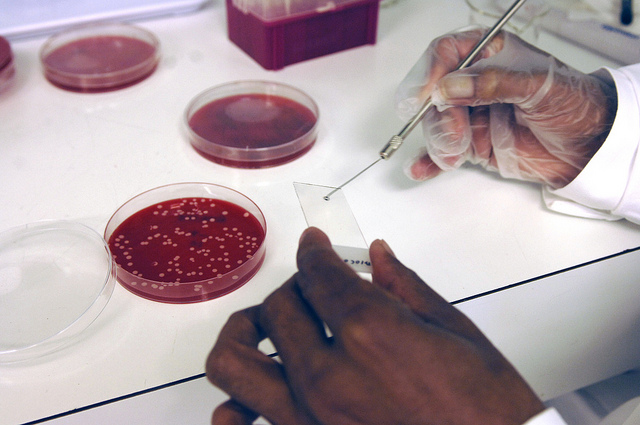Nothing Found
Sorry, no posts matched your criteria
Sorry, no posts matched your criteria

If you study or work in the biosciences, chances are that ‘CRISPR’ has been on your mind for the past five years. That’s Clustered Regularly Interspaced Short Palindromic Repeats. Or, in plain-speak: the easiest, cheapest and most widely effective gene editing technique developed so far.
If you want a pretty video detailing how it works, listen to Feng Zhang, a principal developer of the technique, explain the technique (video). But to cut to the chase—CRISPR gives us the ability to selectively modify (essentially cut-and-paste) genes in vitro and, with some scientific nuance, in vivo too. Although we’ve previously made baby steps toward genetic engineering, this is the first time we’ve had this level of power.
While we need to be mindful of undue hype, it’s hard to overstate the potential this ‘find and replace’ gene editing technology holds. The usually-sober scientific press is breathless enough (see Nature’s CRISPR, the disruptor as an example), while less restrained reporting tends to go the whole hog, sensationalising for example ‘The Genesis Engine.’
Genetic technology has captured public imagination before. And the scientific will’s been around for a while too—the Asilomar Conference on Recombinant DNA was held 42 years ago. What’s different this time around is the technological convergence—of bio- info- and nano-technologies—unfolding in real time that’s creating significant challenges for policy makers and regulators. CRISPR techniques dramatically impact the difficulty, cost, accessibility and practicality of genome editing.
Things are moving fast. In 2015, Bill Gates and others invested $120 million in the CRISPR-based Editas Medicine. In 2017 we’ll see the first wholescale human trials, targeted at certain types of blindness. But focusing on the medical side of things doesn’t tell the full story; CRISPR will change how we think about the environment more broadly, and ecological intervention more specifically. In addition to the chance to develop more robust agriculture, the idea of a gene drive has been getting some recent traction.
By inserting a harmful but ‘selfish’ gene into an organism and watching it spread through the population, a gene drive could potentially and viably eliminate entire species of unwanted animals. It works best with fast-breeding organisms; scientists have demonstrated controlled gene drives with fruit flies, and there’s confidence that the technique could be used to take out malaria-carrying mosquitos.
You won’t find many more explicit public goods than eradicating malaria. It’s up there with world peace. But when we have benefits like that to weigh up, we need to keep cool heads. We’ve thankfully done okay so far, but these are profound issues indeed, and too much of the deliberation has been left to the scientists themselves. Weighing a risky technology against the public benefit is tricky and a moral calculus with imperfect knowledge of potential consequences is fraught. Given how ubiquitous the technology already is, and its potential impacts, we don’t have the luxury of waiting around to see how it pans out before formulating regulatory policies.
CRISPR’s a game-changer. But it doesn’t necessarily compare easily with other revolutionary technologies. Use of the CRISPR technology doesn’t need an advanced quantum-optics lab or a massive cleanroom. It can begin in your garden-variety kitchen. The means to manipulate genes is available on the open internet. Parts of it are practically off-the-shelf, and it’s begging for attention from hostile or unwitting actors.
To make that point: for $150 anyone can order, perfectly legitimately, a DIY kitchen kit which teaches you to engineer E. coli bacteria to survive in an usually hostile medium. Once that might’ve been the end goal of a PhD. Today its ease-of-access makes it available to the ignorant and the merely curious.
Other than intellectual property rights, the techniques are open-source and practically viable. Species and germline-level control isn’t sequestered in a tightly-regimented black box or Manhattan-style project. It’s not funded by an opaque military-industrial complex and held closely by governments.
There’s a real need to ensure that we can regulate the use of the new technology and better understand the way current risk assessment mechanisms can be applied. Used with malevolent intent, CRISPR could have dire consequences. Such potential misuse should provoke hard thought about mitigation options and the implications for national security and resilience structures.
Sometimes convergent technologies are seen to be ‘solutions in search of problems’—but apparently not so in this case. There are concrete problems CRISPR may solve, and there are concrete problems that CRISPR might create. As the technology matures, and as we get a better idea of the full extent of its capabilities, we must think hard about whether we should explore certain applications, rather than just try because we can.
We’ll need to consider the effectiveness of existing regulatory governance structures and decide if they can ensure the safety of such a powerful new technology. The end goal must be prudent and sustained governance of a technology which can do immense good but which could, on a bad day, usher in the potential for real existential threats.

Countries, coalitions, organisations and communities across the world put enormous effort into countering terrorism. Much of that work is done out of the spotlight, in legislatures, police forces, policy departments, security agencies, social services, academia and community groups. Almost all of the vast global activity undertaken to counter terrorism is done without the headlines that accompany terrorist attacks. ASPI’s new Counterterrorism Yearbook series contributes to redressing the balance. Through this first Counterterrorism Yearbook, in what will be an annual publication, we aim to promote that understanding and contribute to shared knowledge of CT.
Sharing knowledge about what others have done, including what does and doesn’t work, is one of the most important aspects of counterterrorism. While working level intentions are often good, differences in politics, culture, law, language and variations in the security environment across the globe make it challenging to translate the experiences of others into relevant lessons for our own situation.
The Yearbook is arranged by country and region, looking at areas around the world where terrorism and CT are in greatest focus. Each chapter examines CT developments in 2016, including the nature of the terrorist threat being faced and how governments and others have approached CT through both policy and operations. Highlights of many chapters will be published in a series on The Strategist.
What emerges is a story of a CT world in three parts. At one extreme is the Middle East and North Africa: the epicentre of Islamist terrorism. CT in that region is about the immediacy of fighting wars and insurgencies. But the battlegrounds feature a complex array of players and histories of political instability, social divisions, criminality and corruption. The problems facing those countries go beyond the remit of CT alone, and will endure beyond the current battles with terrorism.
Western countries provide the counterpoint. While the world was shocked by terrorist attacks and plots in Europe, North America and Australia in 2015 and 2016, there are few instances of actual terrorist violence compared to to other regions. Western countries also have strong political, legal and social institutions enabling a complex and considered array of activities to address terrorism at home and abroad, as well as to build collaborative arrangements and resilience. While the threat remained high in in those countries in 2016, so did the level of CT activity.
The third area encompasses a range of experiences, from those such as Indonesia which had turned the tide against homegrown terrorism and continued to build effective governance, but which is facing a renewed threat; and those across Asia, Africa and the Middle East who are dealing with longstanding and complex disputes complicated by allegiances to external terrorist groups, or opposition elements being labelled as terrorists. Others, such as some of the Gulf states, are affected by proximity to terrorist violence in neighbouring countries, and may be contributing to CT operations at the same time as their nationals or governments are supporting some of those considered to be terrorists.
At the core of the CT story for 2016 is the fundamental challenge of security: how to protect society from terrorist violence while maintaining other human rights.
Countries and their communities are taking various approaches to resolving that challenge. Many states see the protection of fundamental liberties as the core aim of CT. At the same time, CT practitioners will advise their governments to change laws, take additional security measures, and conduct operations to make the environment harder for terrorists, and also ensure that terrorists are held to account. The net result of those additional measures can, however, be restrictions on the very liberty that the terrorists are aiming to undermine. That conundrum led to substantial debate in many countries and globally in 2016, and we expect that debate to continue as long as the challenge of terrorism remains.
In his preface to the Yearbook, Dr Susilo Bambang Yudhoyono, former President of Indonesia, identifies four key areas of focus for CT. The first is to keep the fight against terrorism away from politics as best as possible. When counterterrorism activities become subject to politics, matters become disoriented in a way that ultimately benefits only the terrorists. A quiet, focused, sustained and professional approach is the best way to fight terrorism. Second is the imperative to engage in international cooperation for the very practical reason that terrorist operations are mainly transnational. Third is the need to shore up public support and to maintain religious moderation: a resilient society, thriving religious tolerance and a strong civil society is the best antidote to terrorism. Fourth is the need to constantly adapt.
As Dr Yudhoyono concludes, the Yearbook aims to help practitioners and the community alike understand the nature of those challenges and what’s being done globally to make the world safer. As he states, ‘In a security environment that appears sometimes dominated by the threat of terrorism, let us focus on and learn from the many and varied efforts being undertaken to counter this insidious threat.’